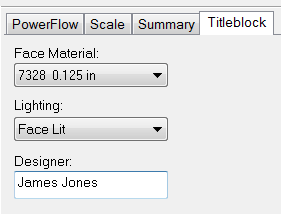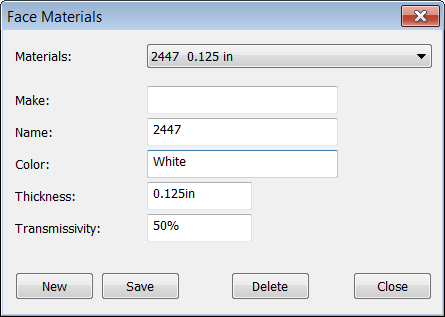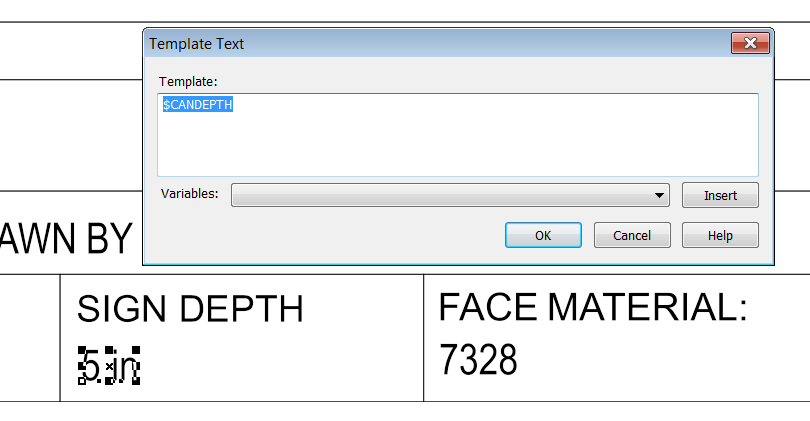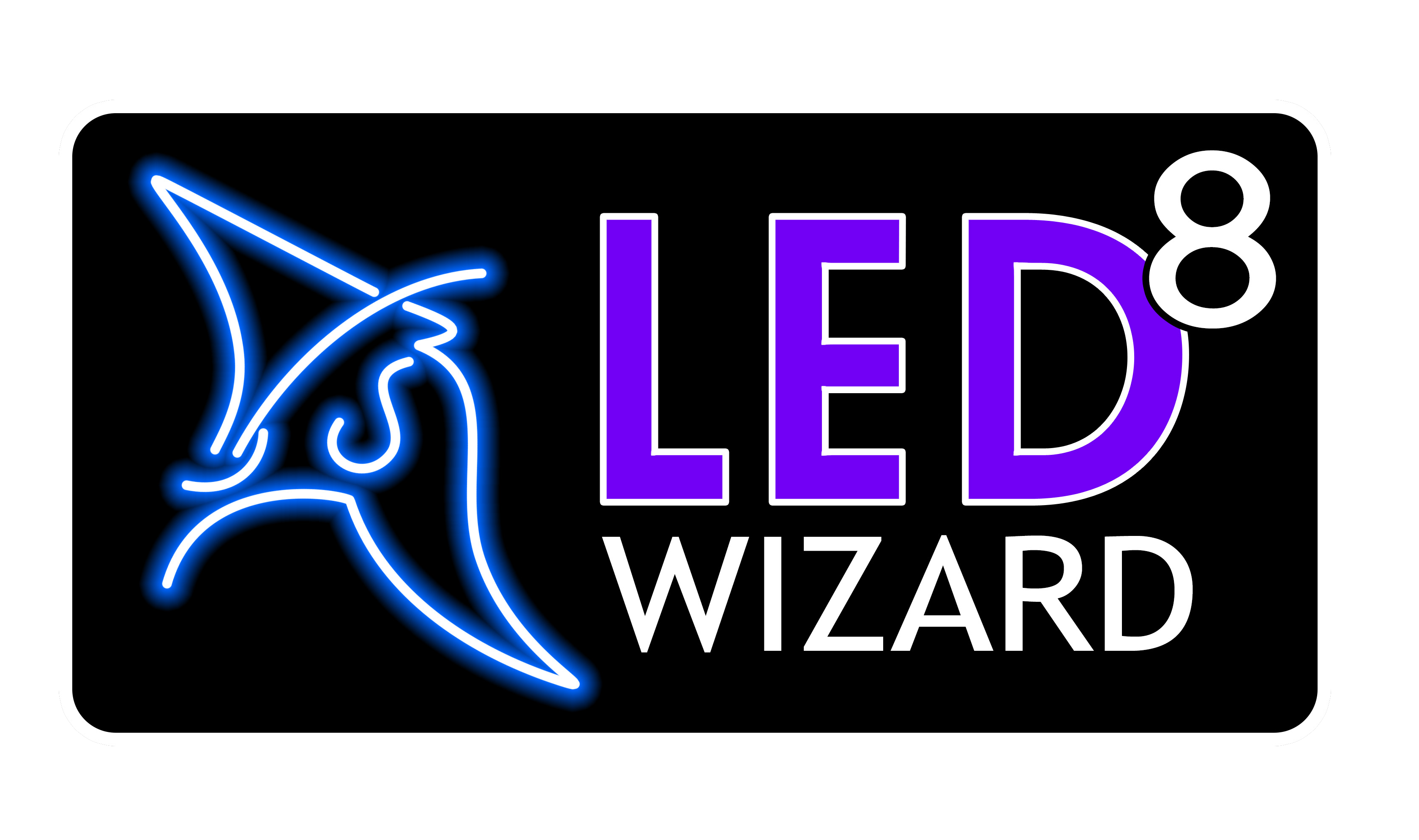|
|
Previous Next
8.6.11 Edit Variable TextThis command lets you edit variable text for an object. Variable Text goes into a standard or customized Title Block Template and provides data specific to the layout. As you can see below, there is a rich set of data variables to choose from. A faster way to open this Template Text dialog box is to double click on an existing data variable text object. Normally, double clicking on an object while in the Layout Tool will launch Powerflow, but when done on a data variable object, it will open this dialog box instead. 
If you are editing an item in an existing Title Block Template, you may have to Ungroup to access the individual data variable objects. Title block templates are merged into the layout as one large Group. TemplateThis is the template text for the variable text. A variable is a text string starting with $ and will evaluate to different text or number, depending on the variable name. The above dialog box shows the $MODULE_COUNT_AND_NAMES variable for the current layout. VariablesThis is the list of variables you can pick from. Note that you can have multiple data variables together on the same line, which can be separated by spaces, dashes, commas, etc. In this case, you might select one from the list and then type in the additional data variables that you want on the same line. The names are pretty self-explanatory, but following the name is a short description: $AVG_MODULES_PER_FEET or $AVG_MODULES_PER_METER $AVG_MODULES_PER_SQUARE_FEET or $AVG_MODULES_PER_SQUARE_METER $AVG_MODULE_SPACING_FEET, $AVG_MODULE_SPACING_INCHES, $AVG_MODULE_SPACING_MM $CAN_DEPTH or $CAN_DEPTH_SLASH $COMPANY $DATE $DESIGNER 
$DIMS $DOC_FACE_MATERIAL_COLOR, $DOC_FACE_MATERIAL_MAKE, $DOC_FACE_MATERIAL_NAME, $DOC_FACE_MATERIAL_THICKNESS 
The actual Face Material used for the job should be chosen from the list in the Job tab in the upper right of the screen, and then the data variables will follow from the selection. $FONT $ILLUMINATION $LETTER_HEIGHT $MODULE_COUNT_AND_NAMES $MODULE_BRAND $MODULE_COUNT_AND_NAMES $MODULE_COUNT_AND_PART_NUMBERS $BRAND_NAME $MODULE_COUNT_AND_PART_NUMBERS Adding the brand name to the beginning gives us this: $MODULE_BRAND $MODULE_COUNT_AND_NAMES - $MODULE_PART_NUMBER $PS_COUNT_AND_NAMES $PS_BRAND $PS_COUNT_AND_NAMES $PS_COUNT_AND_PART_NUMBERS $PS_BRAND $PS_COUNT_AND_PART_NUMBERS $PS_COUNT_AND_NAMES ($PS_PART_NUMBER) $PS_BRAND $PS_COUNT_AND_NAMES ($PS_PART_NUMBER) $MODULE_NAME $TOTAL_MODULE_COUNT $TOTAL_WATTS $PS_NAME $TOTAL_PS $TOTAL_AREA_SQ_FEET or $TOTAL_AREA_SQ_METERS The total area of the sign can be displayed as square feet or square meters. This is useful for face and back materials, but note that the layout is not nested. $TOTAL_PERIMETER_FEET or $TOTAL_PERIMETER_METERS The perimeter measurement, in feet or meters, can be used to estimate trim cap and channel letter return coil. $TOTAL_FOOTAGE The Total Footage data variable should only be used with fixed spacing modules! In general, the concept of "footage" is problematic with LEDs that have variable spacing, so be careful. $DATE_US This is the standard US date formatting, which returns the current date in the MMM DD, YYYY format, such as Jan 01, 2019. $DATE_INTL $DATE This returns the current date in this format as the default: Jan 01, 2019. You can change the Date formatting in the Options dialog box, General tab. In some cases on these data variables, you may want to add a label after the data is updated. To do this, enter the label after the data variable with a space in between. In other cases, a label is already added, such as a unit of measure. For example, after $MODULE_COUNT you may want to add text such as "modules" or "mods" So you would enter "$MODULE_COUNT modules", or "$MODULE_COUNT mods" and get: 180 modules 180 mods Just entering $MODULE_COUNT would give: 180 Please note that to edit a Variable Text Object, double click on it while in the layout Tool to bring up the Template Text dialog box. 
Previous Next |
Was this helpful?
